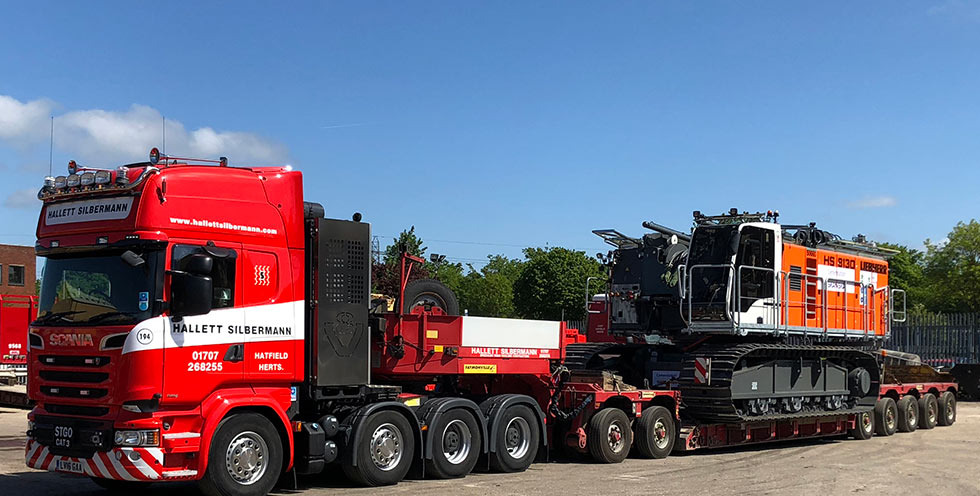Special equipment for Heathrow baggage system 12 Jul 2018
The integrated baggage transfer construction project at Heathrow Airport in the UK involves the installation of conveyor systems in 2.1km of tunnels under the airport to move bags at high speed between terminals for connecting flights.
For the latest phase of construction, a diaphragm wall excavating plant has been delivered by abnormal load specialist Hallett Silbermann based in Hatfield, Hertfordshire, along with two Liebherr 4m wide crawler cranes, each weighing 85 tonne and with digger buckets each weighing 28 tonne.
Originating in the north of England, the equipment was delivered on a 12 axled extendable rear steer low loader outfit hauled by a Scania 8 x 4 tractor unit with a gross vehicle weight of 139 tonne. Hallett Silbermann provided its own Highways Agency compliant escort vehicles to accompany the loads throughout the two-day journey.
The delivery operation took place at night, to enable the vehicles to cross runways and taxi-ways during the night-time airport curfew. Arrival at Heathrow was carefully co-ordinated and the vehicles were subject to the same security regulations as passengers, being searched for hazardous materials and restricted substances before airside access was granted.
In addition to the two crawler cranes and digger buckets, Hallett Silbermann also delivered numerous loads of ancillary equipment, including a smaller 80 tonne crane, 16m long silos and 18m long cages, much of which was also night-time deliveries.
Hallett Silbermann operates across the UK and has completed a number of complex movements for projects including Crossrail, Tideway, and now HS2.
“These were very large and demanding loads, requiring meticulous planning of routes, permit applications for the numerous highway and council areas, and Police authorities," said Adam Whybrow of Hallett Silbermann. “As the vehicles were accessing the secure area of the airport, our drivers had to be security cleared, and their licences and passports checked. The vehicles themselves had to be stripped of anything that is banned by airport security regulations - such as tools and sharp objects, and even bottled water in cabs. Arrival time was critical, so as not to clash with airport operations and to avoid delays which would have caused obstruction to roadways around the airport.”
References
- Giant gantry crane for mega-TBM lift – TunnelTalk, March 2015
- TBM u-turn within an hour – TunnelTalk, December 2017
- Mega TBM u-turn and relaunch in Hong Kong – TunnelTalk, August 2017
|
|
|
|
|
Add your comment
- Thank you for taking the time to share your thoughts and comments. You share in the wider tunnelling community, so please keep your comments smart and civil. Don't attack other readers personally, and keep your language professional.


